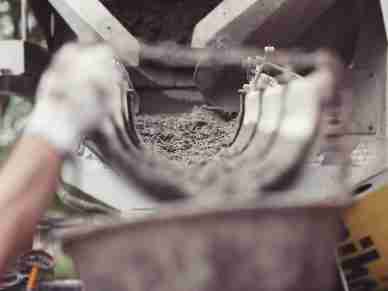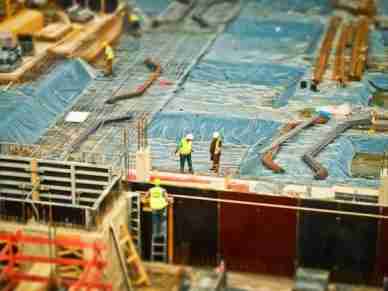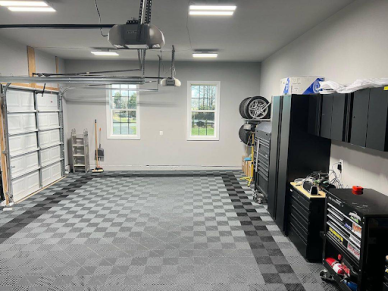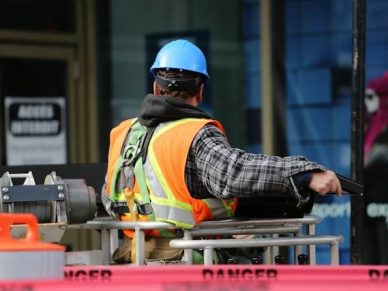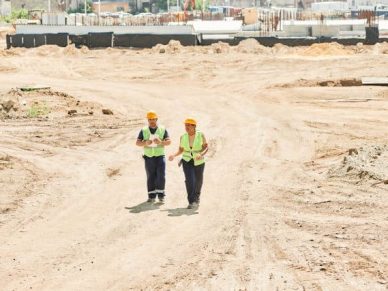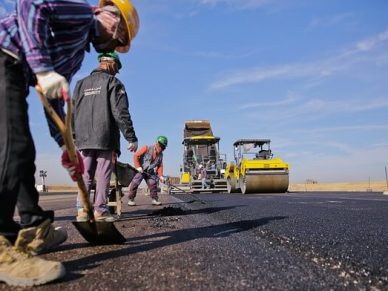Notoriously conservative, the construction industry stands at the edge of some potentially far-reaching changes. While many of modern technology’s inroads so far have been confined to the office, there are a number of developments in construction technology that are now beginning to revolutionize the way construction managers see the work they direct. There is little doubt that the job site of a few decades hence will look very different, with brand new perspectives, literally, increasingly becoming the norm.
High-Flying, Affordable New Vantage Points
Variously known as “drones” or “unmanned aerial vehicles,” camera-equipped, remotely controlled helicopters are already making a big impression on hobbyists. They have also attracted plenty of interest from commercial quarters with giants like Amazon looking to use them for delivery.

Drones have lots of potential for the construction industry, too. Richard Evans already uses them extensively at his Houston-area company SpawGlass, where drones capture images and video of construction activities that could hardly be obtained by any other means, and certainly not so cost-effectively.
In fact, drones help get almost every SpawGlass job off to a good start. “Every project we do,” Evans said, “we integrate aerial imagery of a site prior to construction.” Futuristic FatShark goggles that provide a first-person, virtual/augmented reality view of what the drone sees even let Evans and others feel like they, themselves, are flying over the site.
Although it seems almost certain drones will play an important role in the construction industry of tomorrow, there are challenges to overcome. One of these is that the FAA hasn’t really made decisions on the subject in a definitive way. While plenty of forward-thinking contractors are flying their drones under the radar, a number of legal issues need to be resolved.

Another is that the public can be less enthusiastic about drones than pioneers like Evans often are. A survey by the Pew Research center found that more than 6 in 10 are concerned about the dangers drones might present in an overly lax regulatory environment, even while most are unshakably optimistic about the benefits of technology in general.
None of these issues will leave drones grounded, but they do imply some turbulence to come. Still, boosters remain confident enough that they even envision a future where completely automated machines of this kind regularly take to the skies to provide hands-free, real-time perspectives.
Fast, Automatic, Detailed Site Scanning With LIDAR
More information is always a good thing and buzzing miniature helicopters are not the only new way to extract it from construction sites. Long something of a laboratory-based curiosity, a precise, laser-based form of radar known as LIDAR is coming of age and is increasingly looking like something that will make a big difference in the construction industry.
Just like radar, LIDAR can cover a large area quickly. It produces detailed, high-resolution, 3D imagery, allowing for the quick creation of information-rich digital models of construction sites. That can include features that range down into the inches, allowing for the depiction of everything from terrain to tools and materials.
That makes LIDAR useful for needs ranging from preliminary planning to job-site management duties. In a 2014 report in the Journal of Intelligent and Robot Systems, for example, researchers Jun Wang and others found that the technology was particularly suited for assisting with construction quality control, giving real-time feedback that saved users money over the course of three case studies.

With the simple monitoring of progress on large job sites often costing hundreds of thousands of dollars, LIDAR’s quick, informative overviews are not to be dismissed. The technology does still need to mature some before it becomes a fixture of the industry, however.
Work is ongoing, for example, on the kinds of software that will automatically correlate the smallest scanned-in details with particular physical assets. Researchers also hope to refine the technology to the point that it can pick out features only millimeters in size. While LIDAR is already valuable for probing larger contours and objects, these advancements will raise it to a new level of usefulness for construction industry applications.
Overcoming Resistance and Making a Strong Case for Value
Another of LIDAR’s challenges is one shared by drones and every other new technology that aims at making a dent in the construction industry: overcoming the skepticism and conservatism that so often prevails can be difficult to do.
One real advantage these two technologies bring, though, is that they do not aim at overturning established, proven processes, instead offering to augment them with more in the way of cost-effective, easily obtained information. Couple that simple fact with the remarkable advancements that are still ongoing in both areas, and it seems highly likely that both innovations will carve out niches for themselves before long.
Information source from SmartBidNet and Journal of Intelligent and Robot Systems

